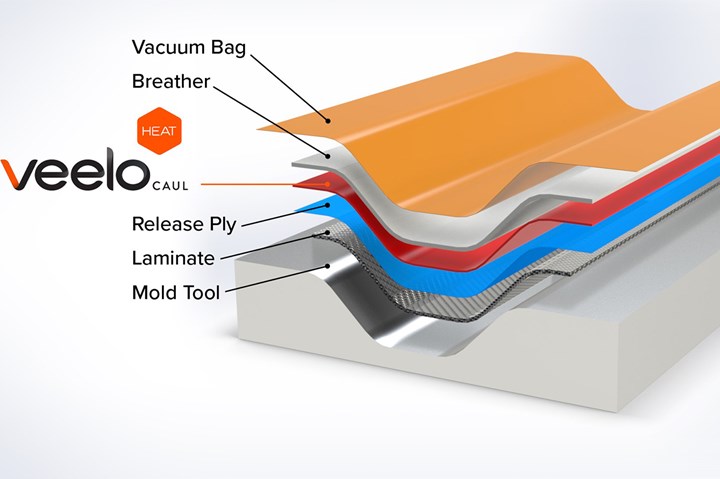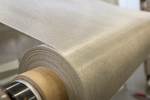VeeloHEAT Caul enables in-situ hot debulking capabilities
Built on existing debulk bagging procedures, Veelo Technologies’ debulking solution can take place at the tool during layup, reducing costs and improving throughput.

Photo Credit: Veelo Technologies
Veelo Technologies (Cincinnati, Ohio, U.S.) leverages its heat technology capabilities to help manufacturers stay out of the autoclave and oven by offering a complete composites debulking system, the VeeloHEAT Caul. A lightweight heating solution that builds on existing debulk bagging procedures, the system enables effective and reliable in-situ hot debulk, eliminating the need to transport parts to an autoclave or oven. Debulking can take place at the tool during layup, substantially improving throughput and build rates, thus reducing overall manufacturing costs.
Due to its flexible and pliable design, the durable and damage-resistant caul is highly uniform across large surface areas and can easily accommodate custom shapes and large tools. It features an FKM-based heater system for high performance and material compatibility. In addition to fatigue resistance, and a temperature range between 100ºF-400ºF, the system is also electrically efficient, with faster heating and cooling capabilities.
The caul is also controlled by the VeeloHEAT Controller, a cost-effective solution capable of controlling up to 16 zones or more. The digital IoT controller is capable of storing data and receiving updates locally or via the cloud and is highly customizable.
Applications may include out-of-oven heated debulk, out-of-autoclave composite processing, accelerated cure in autoclave processing, net-shaped composite repair, secondarily-bonded heater for metallic tooling and secondarily-bonded heater for electrothermal de-icing.
Related Content
-
The next evolution in AFP
Automated fiber placement develops into more compact, flexible, modular and digitized systems with multi-material and process capabilities.
-
Manufacturing the MFFD thermoplastic composite fuselage
Demonstrator’s upper, lower shells and assembly prove materials and new processes for lighter, cheaper and more sustainable high-rate future aircraft.
-
TU Munich develops cuboidal conformable tanks using carbon fiber composites for increased hydrogen storage
Flat tank enabling standard platform for BEV and FCEV uses thermoplastic and thermoset composites, overwrapped skeleton design in pursuit of 25% more H2 storage.












